-
Contents
- In real life
- DBSetXL 0.82
In real life
TEE stands for Trans-Europ-Express, which was the premium service offering international trains in Europe between 1957 and 1988. In the early years specific DMUs were in use, such as the VT-11.5. As more and more lines were electrified, modern electric engines and first-class coaches were put into service. In Germany, the classes 110 and 103 were the main types. In 1971 the national first-class Intercity services were started by the Bundesbahn, some of the existing TEE services were incorporated into that network. Second-class coaches were only introduced in 1979. The first class coaches for TEE trains and Intercity trains used the same color scheme of ivory/red, the second class coaches were ivory/blue. The TEE services were discontinued by name in 1987, to be replaced by EuroCity trains using the same rolling stock.
DBSetXL 0.82
DBSetXL of course offers TEE trains in various ways. Depending on the engine, long-distance coaches are refitted either automatically (VT-11.5, BR 110, BR 103, BR 120) or manually (V200). The composition of the trains differs slightly by engine type - classes 110 and 103 will provide dining cars and dome cars, the others will only have the dining car.
The two special coaches have custom characteristics compared to the plain long-distance coaches, see this table. For the other coaches the difference is only in the colors.
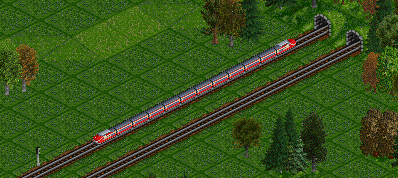
A DMU of class VT-11, which was developed specifically for TEE services.
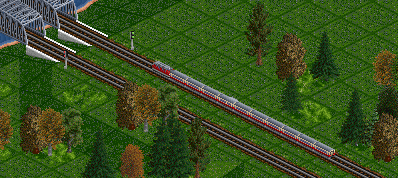
A TEE train hauled by a V200 diesel engine. This was an increasing rare sight, as electrification was in full swing. Until 1966 the TEE "Rheingold" was hauled by the V200 between the Netherlands and Duisburg, the TEE "Merkur" was still running on non-electrified tracks north of Hamburg in the 1970s.
This train has a dining car as the fourth one, but no observation car.
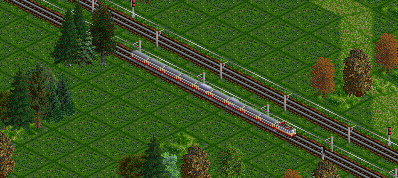
The class 110 was of course in use with TEE trains. The TEE "Rheingold" and the TEE "Rheinpfeil" used the purpose-built rolling stock with dining cars and dome cars, as can be seen in the screenshot (look at the third and fifth coaches).
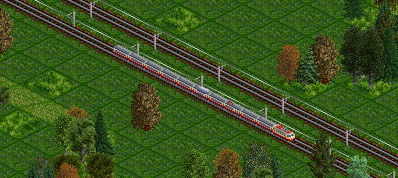
The class 103 was developed for fast passenger transportation and ran in TEE services, as can be seen here with a TEE "Rheingold". Trial service was done, among other services, with the TEE "Blauer Enzian" running between Nuremberg and Hamburg, which was the fastest train of the Bundesbahn at the time.
One small detail is that the dining car of this train is different from the one used when a class 110 hauls the train. The only difference is in the graphics, but nevertheless it is remarkable that such a small detail was included in the set.
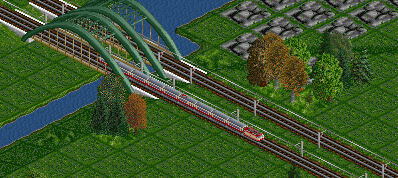
Class 120 was developed to be a universal engine and as such it was also hauling TEE trains, which at the time had been incorporated into the domestic Intercity-network. These trains also have a dining car, but the dome car is gone (it was put out of service in the mid 1970s in the real world).
